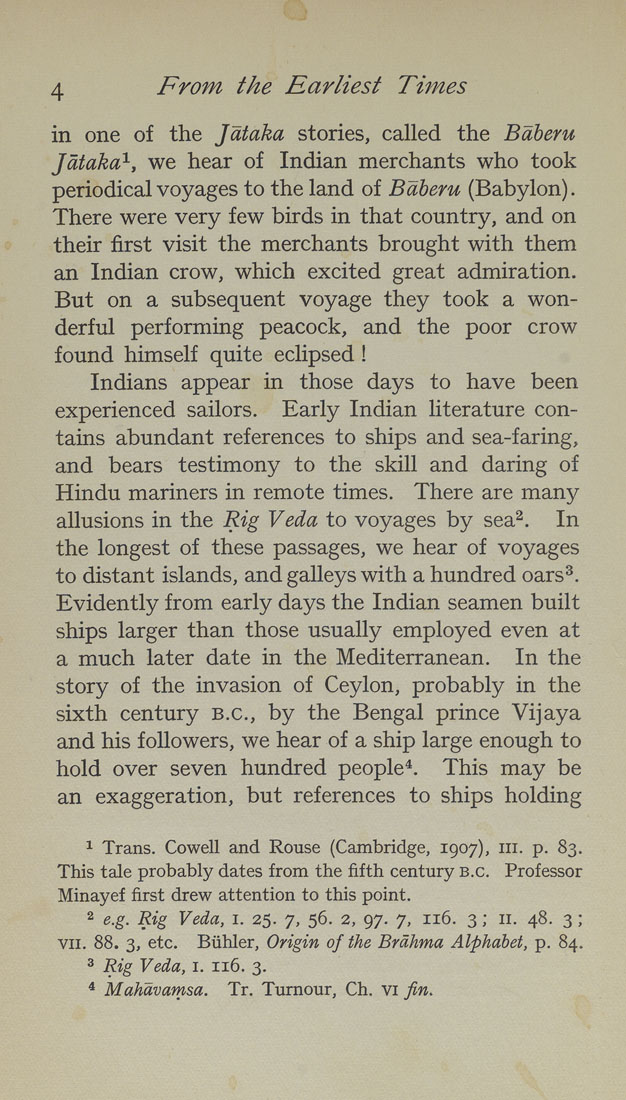4 From the Earliest Times
in one of the Jdtaka stories, called the Bdberu
Jdtaka^, we hear of Indian merchants who took
periodical voyages to the land of Bdberu (Babylon).
There were very few birds in that country, and on
their first visit the merchants brought with them
an Indian crow, which excited great admiration.
But on a subsequent voyage they took a won¬
derful performing peacock, and the poor crow
found himself quite eclipsed !
Indians appear in those days to have been
experienced sailors. Early Indian literature con¬
tains abundant references to ships and sea-faring,
and bears testimony to the skill and daring of
Hindu mariners in remote times. There are many
allusions in the Rig Veda to voyages by sea^. In
the longest of these passages, we hear of voyages
to distant islands, and galleys with a hundred oars^.
Evidently from early days the Indian seamen built
ships larger than those usually employed even at
a much later date in the Mediterranean. In the
story of the invasion of Ceylon, probably in the
sixth century B.C., by the Bengal prince Vijaya
and his followers, we hear of a ship large enough to
hold over seven hundred people*. This may be
an exaggeration, but references to ships holding
^ Trans. Cowell and Rouse (Cambridge, 1907), in. p. 83.
This tale probably dates from the fifth century B.C. Professor
Minayef first drew attention to this point.
2 e.g. Rig Veda, i. 25. 7, 56. 2, 97. 7, 116. 3; 11. 48. 3 ;
VII, 88. 3, etc. Biihler, Origin of the Brahma Alphabet, p. 84.
^ Rig Veda, i. 116. 3.
* Mahavamsa. Tr. Turnour, Ch. vi fin.
|








